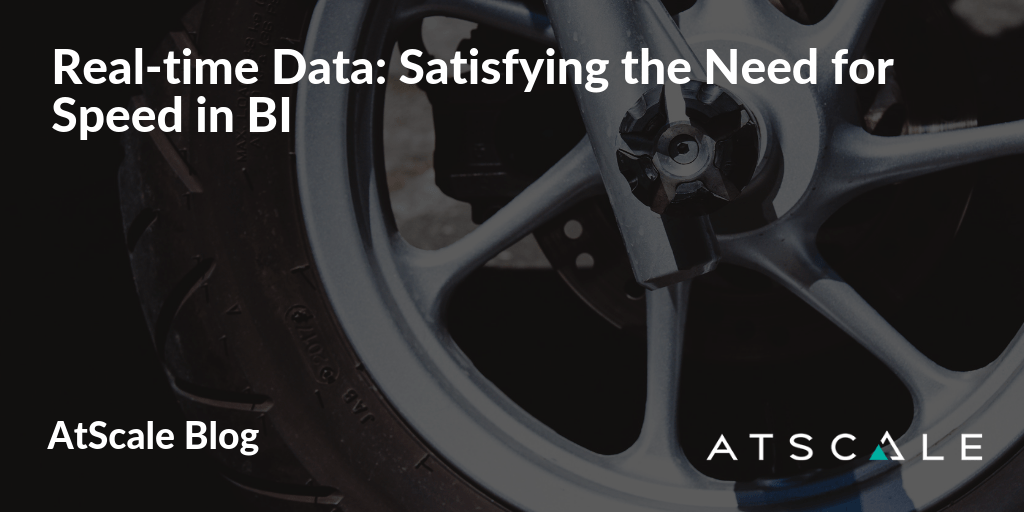
Better Business Intelligence performance for faster time to insights
Business Intelligence (BI) and Multidimensional Analytics (MA) transform how enterprises make decisions by delivering insights across the entire business, including sales, marketing, human resources, and other critical operations. These insights are limited only by the curiosity of the people asking the questions and the speed at which the systems and software that support analytics can perform.
And speed is critical. BI relies on acceleration and performance (a.k.a. “speed”) to enable data exploration and data mining at a tempo that keeps the human brain engaged. If I have to wait too long for the next breadcrumb on the trail to insight, I will probably lose my focus and lose my way.
While speed is one part of scaling a BI implementation, concurrency and cost are two others that are potentially deeply related. Depending on how you achieve your performance goals, it could be synergistic with a reduction in cost and increase in overall concurrency. AtScale’s autonomous data engineering approach to achieving speed has been proven to reduce cost in a pay-per-query cloud environment by an order of magnitude, and increase concurrency both of non elastic and elastic databases by reducing the use of resources to produce answers.
I feel the need – the need for speed!
Peter “Maverick” Mitchell (as played by Tom Cruise in Top Gun)
Speed Bumps in the Road to Real-Time Insights
But just as the need for BI and advanced analytics have become critical to remaining competitive, and the amount of data being collected has exploded, these systems and software are failing in their ability to deliver cohesive, cross-enterprise insights. Data is dispersed across the enterprise in separate silos of information and different data structures, from Hadoop to relational databases to proprietary data formats.
The result is that getting access to all of this data in order to dig in for insights has become a slow and inefficient process. Analysts need to pull data together from multiple repositories in different formats and bring it all together in separate analytics databases, a time-consuming process that by its very nature can lead to stale data.
Not only that, these temporary databases can pose a very large security risk. When the data is pulled into a separate repository, it’s very easy to lose track of who should have permission to use the data from each different source. This creates security issues and can slow down discovery even more while data engineers try to make sense of the different security levels in order to provide the right data to the right people at the speed of business.
So how do you address these issues that threaten to slow down your fast path to insights through BI? The answer is Intelligent Data Virtualization.
Intelligent Data Virtualization: A Turbocharger for Your BI
Intelligent data virtualization provides a universal semantic layer that offers a single view into all the data no matter the format or query method (SQL or MDX), as well as a universal connector to all of your BI tools of choice. The result is a simple solution to accelerated insights.
- Speed: Regardless of how or where data is stored, intelligent data virtualization’s data abstraction layer hides the complexity of existing and future data platforms. This virtualization layer makes hybrid and multi-cloud data architectures a reality by accessing and blending data across cloud and on-premise data sources while adhering to existing governance and security policies. The bottom line – you get access to all the data you need for operational analytics at the speed of your business.
- Agility: Intelligent data virtualization automatically tunes your queries using an AI-driven optimizer that learns from user behavior and data relationships. This delivers consistent sub-second queries and eliminates redundant data scanning, reducing query cost and accelerating time to insight for any data platform.
- Security: True intelligent data virtualization enables IT to adhere to the most stringent corporate security and data governance policies by integrating with the security infrastructure of existing data platforms while providing additional security at the object, row, and column level. You can also grant and revoke access to specific users or groups and mask sensitive data dynamically.
At its core, intelligent data virtualization is designed for BI performance. Think of it as a virtual switching station, offering the ability to seamlessly link your BI tools on one end to all of your data on the other end. Your users don’t have to think about how to get the data from different databases into their BI system. They simply ask for the data and the virtualization does the work for them, getting out of their way so they can focus on answering questions faster.
By providing this level of transparency and performance, you set your users up for BI success. They simply need to do what they do best – mine their data for insights and make better informed decisions to propel the business to even greater success. And faster than ever before possible.


SHARE
Case Study: Vodafone Portugal Modernizes Data Analytics